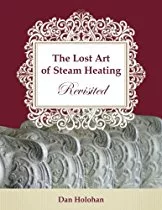Geothermal, the model of environmentally-friendly
Geothermal heating and cooling systems can reduce carbon footprints.

By harnessing the stable temperatures within the earth itself, geothermal heat pumps provide the greenest technology for heating in the winter and cooling in the summer. On top of that, they are also extremely cost-effective.

There are generally four types of ground loop systems: vertical, horizontal, pond or lake loops and well water or “pump to reinjection” systems.

There are generally four types of ground loop systems: vertical, horizontal, pond or lake loops and well water or “pump to reinjection” systems.
According to the U.S. Energy Information Administration, more than half (51%) of the energy used in U.S. homes is directly spent on just two end uses, heating and air-conditioning. As such, producing a comfortable temperature within your living space creates one of the biggest carbon footprints of our modern living environment.
But it’s not all doom and gloom. At the 2020 Spring Leadership Meetings for the National Association of Home Builders, Ed Mazria, architect and founder of Architecture 2030, says there is reason to hope for the future of the built environment. He reports that between 2005 and 2019, building energy use decreased 1.7%, despite the addition of 47 billion square feet of floor space. This “de-coupling” of carbon dioxide emissions and activity growth can be attributed to careful planning and thoughtful design of new buildings that rely on building science principles, provide energy-efficiency improvements and incorporate renewable energy technologies.
Cut carbon with geothermal
Homeowners, builders and government bodies from the smallest local municipalities all the way up to federal institutions are enacting climate goals and seeking ways to cut carbon emissions to reduce the environmental impact of homes and buildings.
More and more people are realizing that the greenest strategy is one that strikes a true balance between the realities of modern life and the desire to live in harmony with nature. Geothermal heat pump systems meet that desire. By harnessing the stable temperatures within the earth itself, geothermal heat pumps provide the greenest technology for heating in the winter and cooling in the summer. On top of that, because of some simple, yet powerful scientific principles, geothermal heat pumps are not only some of the most energy-efficient systems available — they are also extremely cost-effective.
Harness the earth itself
Traditional approaches use electric heaters or take the air from the outside and either heat it up by burning fossil fuels in a furnace or boiler, or cool it down in an AC unit before it is distributed throughout the home. The problem is the air outside a home can be anywhere from -20° F to over 110°. Bringing that air up or down to a comfortable temperature takes a lot of power — power made by burning fossil fuels.
With geothermal systems, heat transfer, or moving heat from one place to another, is the key. Regardless of the season, at about 4 to 8 feet below ground, the temperature stays relatively the same throughout the entire year. Geothermal systems harness that condition to provide essentially “free” energy. They typically consist of an indoor heat pump and a buried system of pipes called a ground loop (or a well system). In the winter, fluid circulates through the ground loop and absorbs the heat from the ground and moves it indoors. The heat pump then compresses the heat to a higher temperature and distributes it through the home. In the summer, the process is reversed. The heat pump takes the warm air inside and sends it to the ground outside, which cools the home. These systems can also be set up so “waste heat” can be used for hot water or to heat a pool or spa.
There are generally four types of loop systems:
- Vertical, which is the most common, has the pipes buried in holes that have been drilled as deep as 400 feet;
- Horizontal, which lays the pipes in trenches that are at least 4 to 6 feet (or more) deep;
- Pond or lake loops deploy the pipes in a body of water near the home; and
- Lastly, the well water or “pump to reinjection” system, where two boreholes are drilled. One serves as the source and the other is the injection well — these systems work in warm climates where the predominant need is for cooling.
Addressing many sides of pollution
When discussing the reduction of carbon footprints, the main consideration is often about the energy consumption at the end point, i.e. the furnace. However, with geothermal systems that reduce consumption from 25% to 70% (depending on climate and equipment), there is less pressure applied to the grid because fewer megawatts are required.
In addition, geothermal heat pump systems provide health and lifestyle benefits beyond combatting the carbon emissions and air pollution caused by burning fossil fuels. For instance, because all the equipment can be housed inside behind sound-reducing insulation, these systems can almost completely mitigate and eliminate noise pollution as opposed to the persistent drone and vibrations of traditional outdoor units. And with nothing outside in the open air, there is no risk of equipment being damaged by inclement weather. Furthermore, the indoor air quality is enhanced by the filters that are commonly used in these high-efficiency systems. With these filters comes a reduction in humidity, which makes the air feel crisp and cool in the summer and comfortably cozy in the winter.
Lastly, the landfills will see less waste because most geothermal packages are designed to last twice as long as traditional heating and AC units, which means these systems can potentially provide highly efficient, environmentally-friendly heating and cooling to a home today and for generations to come.
Looking for a reprint of this article?
From high-res PDFs to custom plaques, order your copy today!





